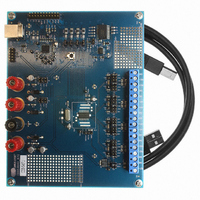CDB5467U Cirrus Logic Inc, CDB5467U Datasheet - Page 22

CDB5467U
Manufacturer Part Number
CDB5467U
Description
BOARD EVAL FOR CS5467 ADC
Manufacturer
Cirrus Logic Inc
Type
A/Dr
Specifications of CDB5467U
Main Purpose
Power Management, Energy/Power Meter
Embedded
Yes, MCU, 8-Bit
Utilized Ic / Part
CS5467
Primary Attributes
Watt-Hour Meter
Secondary Attributes
Graphical User Interface, SPI™ & USB Interfaces
Product
Data Conversion Development Tools
Maximum Clock Frequency
4 MHz
Interface Type
USB
Supply Voltage (max)
5 V
Supply Voltage (min)
3.3 V
For Use With/related Products
CS5467
Lead Free Status / RoHS Status
Contains lead / RoHS non-compliant
Lead Free Status / RoHS Status
Lead free / RoHS Compliant, Contains lead / RoHS non-compliant
Other names
598-1555
CDB-5467U
CDB-5467U
For each enabled input channel, the measured value is
rectified and compared to the associated level register .
Over the duration window, the number of samples
above and below the level are counted. If the number of
samples below the level exceeds the number of sam-
ples above, a Status register bit V1
I1
tion. (see
6.12 Epsilon
The Epsilon register is used to set the gain of the 90°
phase shift used in the quadrature power calculation.
The value in the Epsilon register is the ratio of the line
frequency to the output word rate (OWR). It is, by de-
fault, 50/4000 (0.0125), for 50 Hz line and 4000 Hz sam-
ple (OWR) frequencies.
For 60 Hz line frequency, it is 60/4000 (0.015). Other
output word rates (OWR) can be used.
Epsilon can also be calculated automatically by the
CS5467 by setting the AFC bit in the Mode Control
( Modes ) register. The Frequency Update bit (FUP) in
the Status register is set every time the Epsilon register
has been automatically updated.
6.13 Temperature Measurement
The on-chip temperature sensor is designed to mea-
sure temperature and optionally compensate for tem-
perature drift of the voltage reference. It uses the V
a transistor to determine temperature.
In the CS5467, voltage2 and temperature are multi-
plexed on one ADC channel. To initiate a temperature
measurement, write 1 to the Temperature Measure-
ment ( T
2, 4, and back to 0. Wait for T
done, Temperature ( T ) is updated. The Status register
bit TUP also indicates when the Temperature register is
22
FAULT
MEAS
(I2
Figure
FAULT
Figure 8. Sag and Fault Detect
) register. T
) is set, indicating a sag or fault condi-
8)..
MEAS
MEAS
will go through counts 1,
to return to 0. When
SAG
(V2
SAG
BE
of
),
updated. The Voltage2 register ( V2 ) will not update dur-
ing the temperature measurement, but resume mea-
surement afterwards.
Temperature measurements are stored in the Temper-
ature register ( T ) which, by default, is configured to a
range of ±128 degrees on the Celsius (°C) scale.
The application program can change both the scale and
range of Temperature ( T ) by changing the Temperature
Gain ( T
Two values must be known — the transistor’s
degree, and the transistor’s V
time of this publication, these values are:
V
To determine the values to write to T
the following formulae:
T
T
In the above equations, AD
range of the temperature A/D converter or 833.333 mV
and T
ture ( T ) register. The binary exponents are the bit posi-
tions of the binary point of these registers.
To use the Celsius scale (°C) and cover the chip’s oper-
ating temperature range of -40°C to +85°C, the Temper-
ature register range needs to be ±128 degrees. T
should be 128 degrees.
T
T
These are the actual default values for these registers.
T
and/or offset of the temperature sensor or A/D convert-
er. (See
To use the Kelvin (°K) scale, simply add 273 times
/ AD
need more range. Since -40°C to +85°C is 233°K to
358°K, a T
T
To use the Fahrenheit (°F) scale, multiply
and add 32 times the new
since 0°C = 32°F. You will also want to use a T
degrees to cover the -40°C to +85°C range.
∆
GAIN
OFF
GAIN
OFF
GAIN
GAIN
BE
V
BE
0 = 79.2604368 mV at 0°C
FS
= -V
FS
= AD
= 833.333 / 0.2769523 / 128 x 131072
calculation.
= 3081155 (0x2F03C3)
= -79.2604368 / 833.333 x 8388608
= -797862 (0xF3D35A)
and T
(per degree) = 0.2769523 mV/°C or °K
x 2
GAIN
Section 9. System Calibration
is the desired full-scale range of the Tempera-
BE
23
FS
FS
) and Temperature Offset ( T
0 / AD
OFF
to T
/
of 512 degrees should be used in the
∆
can also be used to calibrate the gain
V
OFF
FS
BE
x 2
since 0°C = 273°K,. You will also
/ T
FS
23
x 2
∆
V
FS
17
BE
BE
is the full-scale input
/ AD
at 0 degrees. At the
GAIN
FS
on page 40).
OFF
and T
x 2
CS5467
∆
) registers.
V
23
DS714F1
∆
BE
FS
OFF
V
to T
BE
by 5/9
of 256
∆
, use
V
OFF
per
BE
FS



















